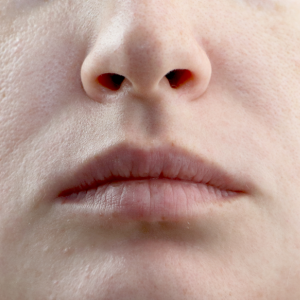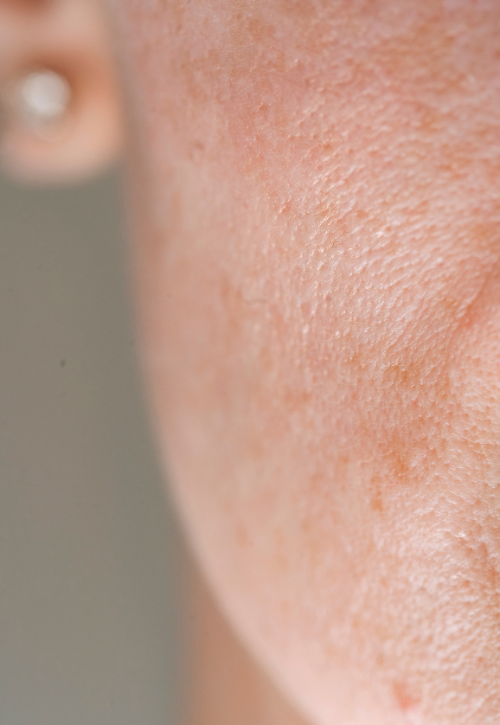Collagen Loss: What Happens, When It Happens, and How Microneedling Can Save Your Skin
A topic that’s on everyone’s mind as we get older: collagen loss. It's one of those inevitable things that, unfortunately, we can’t completely avoid—but we can fight back against it. Collagen is the magical protein that keeps our skin plump, firm, and oh-so-youthful, but as time goes on, our bodies start producing less and less of it. The result? Sagging skin, fine lines, wrinkles, and that dreaded loss of elasticity. But don’t freak out just yet! There’s a superhero treatment that’s been gaining serious traction in the skincare world, and it’s here to help: microneedling.
In this blog post, we’re going to break down everything you need to know about collagen loss—what it is, when it starts, and how it impacts your skin. Plus, we’ll dive deep into the science behind microneedling, why it’s such a game-changer for collagen production, and how it can give your skin that gorgeous glow you’ve been dreaming of. Ready to get your glow on? Let’s do this!
What Is Collagen and Why Is It So Important?
Before we get into the nitty-gritty of collagen loss, let’s talk about what collagen actually is. Collagen is a protein found in the body that’s essential for keeping your skin firm, plump, and youthful. Think of it as the scaffolding that supports your skin structure. It’s responsible for giving your skin its strength and elasticity, and it plays a key role in keeping those pesky wrinkles and fine lines at bay.
Collagen is the most abundant protein in your body, making up about 30% of your total protein content and a whopping 70% of your skin’s protein. It’s found in your skin, bones, muscles, tendons, and even your blood vessels. But when we talk about collagen in the context of skincare, we’re mainly focused on the collagen in the dermis, which is the middle layer of your skin. This is where all the magic happens to keep your skin looking firm, smooth, and youthful.
When and Why Does Collagen Loss Happen?
Smoking accelerates collagen loss by damaging collagen fibers and reducing blood flow to the skin, which impairs the skin's ability to repair itself, leading to premature wrinkles, sagging, and an overall aged appearance.
Alright, here’s the part none of us love to hear: Collagen production starts to decline in your mid-20s. Yes, you read that right—your mid-20s! From around the age of 25, your body’s collagen production drops by about 1% each year. That might not sound like a lot, but trust me, it adds up over time.
By the time you hit your 30s and 40s, you might start noticing that your skin isn’t bouncing back like it used to. It might look a little less plump, and you might spot the early signs of fine lines and wrinkles. Fast forward to your 50s and beyond, and you might notice more significant changes—like sagging skin, deeper wrinkles, and a loss of elasticity.
But why does this happen? There are a few key factors that contribute to collagen loss:
Aging: The natural aging process is the biggest culprit. As we age, our bodies produce less collagen, and the collagen we do have starts to break down. This leads to the gradual loss of firmness and elasticity in the skin.
Sun Exposure: UV radiation from the sun is a major collagen killer. It breaks down the collagen in your skin and impairs your body’s ability to produce new collagen. This is why sun protection is absolutely essential if you want to keep your skin looking youthful.
Lifestyle Factors: Smoking, poor diet, and lack of sleep can all accelerate collagen loss. Smoking, in particular, is a big no-no for your skin’s collagen production. It damages collagen fibers and reduces blood flow to the skin, making it harder for your skin to repair itself.
Hormonal Changes: Hormonal changes, especially during menopause, can lead to a significant drop in collagen production. This is why many women notice a more rapid decline in skin elasticity and firmness as they approach menopause.
Collagen loss around the mouth leads to the development of fine lines, deepening of smile lines (nasolabial folds), and the appearance of marionette lines, which can give the area a sagging, aged look.
Where Does Collagen Loss Happen on the Face?
So, where exactly does collagen loss show up on your face? The short answer: everywhere. But there are some areas where it’s more noticeable than others. Let’s break it down:
Under the Eyes: The skin under your eyes is super delicate, and it’s often one of the first places to show signs of collagen loss. As collagen decreases, you might notice that the skin under your eyes becomes thinner, leading to dark circles, puffiness, and fine lines.
Cheeks: As collagen levels drop, the plumpness in your cheeks can start to fade. This can lead to sagging skin and the loss of those youthful, rounded cheeks.
Jawline: One of the most noticeable effects of collagen loss is a less defined jawline. As the skin loses its firmness, you might see sagging along the jawline and the appearance of jowls.
Forehead: Fine lines and wrinkles on the forehead become more pronounced as collagen breaks down. You might also notice that your skin feels less smooth and more crepey.
Around the Mouth: Collagen loss around the mouth can lead to the formation of smile lines (also known as nasolabial folds) and marionette lines, which run from the corners of your mouth down to your chin.
Neck: Don’t forget about the neck! The skin on your neck is just as prone to collagen loss as the skin on your face. As collagen decreases, you might notice sagging, wrinkles, and that dreaded “turkey neck” effect.
The Science Behind Collagen Loss
Now, let’s get a little science-y for a minute. To understand how collagen loss happens, it helps to know a bit about the structure of your skin. Your skin is made up of three main layers:
Epidermis: This is the outermost layer of your skin, and it’s where new skin cells are produced. It acts as a protective barrier against environmental damage.
Dermis: The dermis is the middle layer of your skin, and it’s where most of the magic happens. This is where collagen, elastin, and other proteins live. The dermis is responsible for your skin’s strength, elasticity, and firmness.
Hypodermis: The hypodermis is the deepest layer of your skin, and it’s made up of fat and connective tissue. It helps to cushion and insulate your body.
Collagen is produced by cells called fibroblasts in the dermis. These fibroblasts are responsible for maintaining the structural integrity of your skin by producing collagen and elastin fibers. But as we age, fibroblasts become less active, and the production of collagen slows down. At the same time, enzymes called matrix metalloproteinases (MMPs) start to break down existing collagen fibers. The result? A gradual loss of collagen, leading to thinner, less elastic skin.
Microneedling helps increase collagen production in the skin by creating tiny micro-injuries that stimulate the body’s natural healing process. As your skin repairs itself, it produces new collagen and elastin, which can help smooth out the uneven texture of acne scars, fill in depressions, and restore a more even, healthy complexion over time.
How Microneedling Helps Combat Collagen Loss
Alright, now that we’ve covered the not-so-fun part about collagen loss, let’s talk about how you can fight back—specifically, with microneedling. This treatment has been getting a lot of buzz lately, and for good reason. It’s one of the most effective ways to stimulate collagen production and improve the overall texture and appearance of your skin.
So, what exactly is microneedling?
Microneedling, also known as collagen induction therapy, is a minimally invasive treatment that involves using a device with fine needles to create tiny, controlled punctures in the skin. These micro-injuries trigger your skin’s natural healing process, which includes ramping up collagen and elastin production. Think of it as a wake-up call for your skin’s fibroblasts—they get busy producing new collagen to repair the “damage,” leading to firmer, smoother skin.
The Science of Microneedling: How It Works
Microneedling works by harnessing your skin’s natural ability to heal itself. Here’s a breakdown of how the process works:
Creating Micro-Injuries: The microneedling device (which can be a dermaroller or a motorized pen) is passed over the skin, creating thousands of tiny punctures, or micro-injuries. These injuries are small enough that they don’t cause any actual damage to the skin, but they’re big enough to trigger a healing response.
Triggering the Healing Response: Your skin immediately goes into repair mode, sending growth factors, cytokines, and other healing agents to the site of the micro-injuries. This response also includes the activation of fibroblasts, which start producing new collagen and elastin fibers to repair the skin.
Building New Collagen: As the fibroblasts produce new collagen, it’s laid down in a more organized, dense pattern, which helps to strengthen the skin’s structure. Over time, this new collagen helps to fill in fine lines and wrinkles, improve skin texture, and restore firmness and elasticity.
Improving Skin Texture and Tone: In addition to boosting collagen, microneedling also promotes the regeneration of skin cells, leading to a smoother, more even complexion. It can help with a variety of skin concerns, including acne scars, enlarged pores, and hyperpigmentation.
The Benefits of Microneedling for Collagen Loss
Microneedling is a powerhouse treatment for anyone looking to combat collagen loss and improve their skin’s overall appearance. Here’s why it’s so effective:
Stimulates Collagen Production: As we’ve already discussed, collagen is the key to youthful, firm skin. Microneedling jump-starts your skin’s collagen production, helping to replace what’s been lost over time.
Reduces Fine Lines and Wrinkles: By promoting the production of new collagen and elastin, microneedling helps to smooth out fine lines and wrinkles, giving your skin a more youthful appearance.
Improves Skin Texture: If you’ve been dealing with rough, uneven skin texture, microneedling can help. The treatment promotes the regeneration of skin cells, leading to a smoother, more even complexion.
Minimizes Pore Size: Enlarged pores can be a result of collagen loss, but microneedling can help tighten the skin and reduce the appearance of pores.
Boosts Product Absorption: Those tiny micro-channels created by microneedling also enhance the absorption of skincare products. This means that your serums and moisturizers can penetrate deeper into the skin, making them more effective.
What to Expect During a Microneedling Treatment
So, you’re sold on microneedling and ready to give it a try. But what exactly happens during the treatment? Here’s what you can expect:
Consultation: Before your microneedling treatment, you’ll have a consultation with a licensed professional (like me!) to discuss your skin concerns, goals, and any potential contraindications. We’ll also go over what to expect during and after the treatment.
Numbing: Microneedling can be a little uncomfortable, especially if you’re targeting deeper layers of the skin. To keep things comfortable, we’ll apply a numbing cream to your face about 20-30 minutes before the treatment.
The Procedure: Once your skin is numb, the microneedling device will be passed over your skin in a controlled, systematic way. You might feel a slight prickling sensation, but it shouldn’t be painful.
Aftercare: After the treatment, your skin will likely be a little red and may feel sensitive—kind of like a mild sunburn. We’ll apply a soothing serum and possibly a calming mask to help calm your skin. It’s super important to avoid sun exposure and use a gentle, hydrating skincare routine in the days following your treatment.
Results: You’ll start to notice the benefits of microneedling after about a week, with continued improvements over the following weeks as your skin continues to produce new collagen. For best results, most people opt for a series of treatments spaced about 4-6 weeks apart.
Jennifer Aniston has praised microneedling as one of her go-to treatments for maintaining her youthful, glowing skin, crediting it for its ability to boost collagen and improve skin texture. Photo: Steve Granitz/Getty Images
Celebrities Who Swear by Microneedling
If you’re wondering whether microneedling is the real deal, just ask some of your favorite celebs. A-listers are all about microneedling for its ability to keep their skin looking flawless. Here are a few famous faces who’ve sung the praises of microneedling:
Kim Kardashian: The queen of beauty treatments, Kim K, is a big fan of microneedling. She’s even documented her treatments on social media, showing how it helps keep her skin smooth and glowing.
Jennifer Aniston: Our forever #skinspiration, Jennifer Aniston, has credited microneedling with helping her maintain her age-defying complexion. She’s all about treatments that keep her skin looking youthful and radiant.
Gwyneth Paltrow: Always ahead of the curve in the wellness world, Gwyneth Paltrow has also jumped on the microneedling bandwagon. She’s a fan of how it helps improve her skin’s texture and tone.
Angelina Jolie: Known for her flawless skin, Angelina Jolie reportedly uses microneedling to keep her skin looking smooth and firm, especially as she ages.
Microneedling at Home vs. Professional Treatment
Now, you might be thinking, “Can I just do microneedling at home?” And while there are at-home dermarollers available, here’s the deal: nothing beats a professional microneedling treatment. Here’s why:
Safety: Professional treatments are performed by licensed professionals who know exactly how to target the right areas at the right depth. At-home devices, while less expensive, don’t go as deep and can actually cause more harm than good if not used correctly.
Results: Professional microneedling devices penetrate deeper into the skin, leading to more significant collagen production and better results. At-home dermarollers can help with surface-level concerns, but they won’t give you the same dramatic improvements as a professional treatment.
Custom-Tailored: When you get microneedling done by a pro, they can customize the treatment to your specific skin concerns. Whether you’re dealing with fine lines, acne scars, or just want a glow boost, a professional will know exactly how to achieve your goals.
Combining Microneedling with Other Treatments
Microneedling is amazing on its own, but it can be even more effective when combined with other treatments. Here are a few powerhouse combos to consider:
Microneedling + PRF (Platelet-Rich Plasma): Known as the “vampire facial,” this combo uses your own blood’s platelets to supercharge the effects of microneedling. The PRF is applied to your skin after microneedling to promote even faster healing and boost collagen production.
Microneedling + Chemical Peels: A chemical peel before or after microneedling can enhance the exfoliation process and target surface-level concerns like pigmentation and texture.
Your Collagen Comeback Starts with Microneedling
Collagen loss might be inevitable, but that doesn’t mean you have to sit back and let it take over. Microneedling is one of the best ways to boost collagen production, improve skin texture, and keep your complexion looking youthful and radiant. Whether you’re starting to see the first signs of aging or you’re dealing with deeper wrinkles and sagging, microneedling can help turn back the clock.
Ready to give your skin the love it deserves? Schedule a microneedling treatment at your favorite medspa (like Core Aesthetic!) and get ready to glow like never before. Trust me—your future self will thank you!





